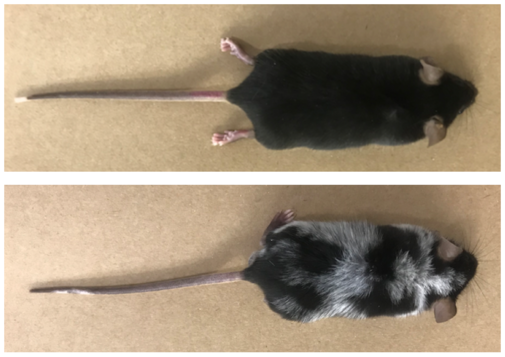- Research: They find a molecular mechanism involved in the appearance of gray hair
The development of gray hair, a process known scientifically as gray hair or acromotriquia, can be accelerated by persistent acute stress or severe trauma . A typical example with which historians speculate is that of Marie Antoinette, who woke up with white hair the day she was going to be guillotined, in the middle of the French Revolution of 1793.
"For a long time it has been said that stress causes the hair to turn white, but so far there was no scientific basis for this belief, " says Thiago Mattar Cunha of the Center for Research on Inflammatory Diseases (CRID) at the University of São Paulo, Brazil, which has done a job, which Nature publishes today, in collaboration with the group of Ya-Chieh Hsu, Professor of Regenerative Biology at Harvard University, United States, and has shown that this phenomenon does occur. In addition, the mechanisms involved and a way to interrupt the process of hair color loss due to stress have been identified.
The finding has occurred fortuitously when experiencing pain medications in dark-haired mice that were given a substance called resiniferatoxin to activate a receptor expressed by sensory nerve fibers and induce severe pain. Four weeks after the injection with this substance, it was observed that the fur of the animals had turned completely white. "The experiment was repeated several times until the researchers concluded that the phenomenon was actually due to the application of resiniferatoxin, a compound chemical produced naturally by Euphorbia resinífera , a plant similar to a cactus native to Morocco, and by Euphorbia poissonii , from northern Nigeria.This substance is also an ultrapotent natural analogue of capsaicin.
Imminent danger
The objective was to demonstrate that the loss of coat color was the result of pain-induced stress. "The sympathetic nervous system is directly affected by stress. This division of the autonomic nervous system consists of nerves that branch out from the spine and extend throughout the body. It controls the body's" fight or flight "response to danger imminent, triggering the release of adrenaline and cortisol so that the heart beats faster, the increase in blood pressure, respiration is accelerated and the pupils dilate, among other systemic effects, "explains Cunha.
In research, it has also been shown that the administration of other substances is capable of controlling hair color loss . "After injecting resiniferatoxin into mice, we treat them with guanetidine, an antihypertensive drug that controls neurotransmission through sympathetic fibers, observing the blockage of the process of hair color loss," according to the researcher.
The detrimental impact of stress is, according to the researchers, important, since it leads to the loss of all the stem cells that regenerate the pigment in a few days, considering that the damage is permanent.
"Acute stress, particularly the fight or flight response, has traditionally been considered beneficial for the survival of an animal. But in this case, acute stress causes permanent depletion of stem cells," says Bing Zhang, co-author of the study.
It is very likely that other systems of the organism will be affected by intense stress similar to the hair follicle bulb. "We don't know for sure what the implications are," said Cunha, who says that the effects of sympathetic activity on other subpopulations of stem cells are already being studied.
According to the criteria of The Trust Project
Know more- Science and Health
'Untouchables' culture as a gift from the Magi
Technology: The Spanish researcher who wants to create a pacemaker that is proof of hackers
Research Prohibited contaminants that continue to affect the size of the fetus

